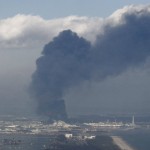
The Great East Japan earthquake of March 11, 2011, and the resulting tsunami had a profound impact on nuclear power operators worldwide. The policy discussion on nuclear energy changed from the benefits of this clean energy technology to safety and security—issues that, informed by decades of safe operation, had been largely resolved in the minds of the public.
Within one week of the Fukushima accident, operators at the 104 U.S. reactors were reviewing systems and com-ponents to ensure that the designed features and measures could mitigate the effects of a seismic event, flood or complete loss of AC power. The U.S. nuclear industry has pooled resources to ensure the lessons from Japan are systematically gathered, analyzed and imple-mented. This process has already identified near-term actions that will add further to the margin of safety. In addition, the industry will take action to satisfy appropri-ate and additional requirements imposed by the NRC.
For U.S. nuclear operators, safety is always in the fore-front of operations and planning. The U.S. Nuclear Reg-ulatory Commission (NRC) is one of the world’s largest independent regulators. With over 4,000 employees and an annual budget of $1 billion, the NRC is the most intru-sive and prescriptive regulator in the world.